Hwangmaesan County Park (황매산군립공원)
0m 9887 2021-08-18
4, Hwangmaesangongwon-gil, Hapcheon-gun, Gyeongsangnam-do
+82-55-930-4752
Located at the border between Gahoe-myeon and Daebyeong-myeon of Hapcheon, Hwangmaesan Mountain has long been considered a guardian mountain of Hapcheon, but was rarely ever featured in hiking or tourist publications. Thanks to this, the mountain's natural environment has been kept in pristine condition. In 1983, the mountain was designated as a county park and now, along with Gayasan Mountain, it is regarded as one of the major mountains in Hapcheon. Hwangmaesan Mountain is one of the last mountain peaks of the Taebaek Mountain Range, and reaches an altitude of 1,113 meters. Pine trees and royal azalea decorate the rocky mountain. From the summit, hikers can see Hapcheonho Lake and Jirisan, Deogyusan, and Gayasan Mountains.
Sancheong Hwangmaesan Mountain (황매산(산청))
1.4 Km 40899 2021-04-13
Hwangmaesan-ro 1202beon-gil, Sancheong-gun, Gyeongsangnam-do
+82-55-970-6901
One of the last mountains of the Taebaek Mountain Range, Hwangmaesan Mountain is located in Sancheong, Gyeongsangnam-do. The mountain features fantastic rock formations and a beautiful vista from the summit that resembles arpricot blossoms. It is said that anyone who prays from the summit will have their wish come true, drawing in plenty of earnest hikers. In May, a large field near the summit is covered in vibrant pink royal azaleas. Attractions on the mountain include Bakjwigol Valley, Norubawi, Heundeulbawi, Janggunbawi, Chotdaebawi, Geobukbawi and Sinseonbawi Rocks among others.
Bugeomaeul (북어마을)
5.8 Km 0 2023-12-22
34 Hoeyanggwangwangdanji-gil, Hapcheon-gun, Gyeongsangnam-do
Bugeomaeul is a bugeo jjim (braised dried pollack) restaurant located within Hapcheonho Hoeyang Tourist Resort, where visitors can get enjoy the best view of the lake. People often enjoy dried pollack as a braised dish in Korea. It is rich in protein and amino acids, known to prevent aging and improve liver function. Above all, it is an excellent detox food, and Koreans often eat bugeo jjim as a hangover food. Bugeomaeul uses their original sauce and recipe for a mouthwatering dish. The restaurant also has after-meal add-on options like noodles, which can be mixed with the remaining sauce for a more filling meal. The restaurant is located right in front of Hapcheonho Lake, allowing visitors to enjoy the meal comfortably with a pleasant sight in view.
Hapcheonho Lake (합천호)
7.1 Km 39341 2023-12-22
Area of Hapcheonhoban-ro, Hapcheon-gun, Gyeongsangnam-do
Hapcheon Dam, located about 16 kilometers southwest of Hapcheon-eup, was completed in December 1988. It can hold 790 million tons of water and produce 234 million kilowatts annually. The lakeside road that runs from Hapcheon to Geochang after passing the dam is a romantic driving course reminiscent of Chuncheonho Lake or Chungjuho Lake, and the clean and clear lake with its beautiful surrounding scenery captivates vacationers on the road. It's a great place to enjoy a lakeside drive when the cherry blossoms bloom in early April.
Hwanggyepokpo Falls (황계폭포)
8.7 Km 28899 2023-12-22
30 Hwanggye 2-gil, Hapcheon-gun, Gyeongsangnam-do
As a famous attraction that goes well with the charming surrounding scenery: the stream flowing from Gujangsan Mountain is beautiful and the surrounding rock cliffs spread out like a folding screen. In addition to the scenery, the sound of waterfall plunging down from a 20-meter-high cliff is like roaring thunder. The amount of water may vary, but it never runs out, making one forget the heat even in the middle of summer. The lowest tier of the waterfall pool is so deep, that legend has it that a dragon had once lived in the bottom of the pool. Ancient scholars were so fascinated by the beautiful scenery that they often compared it to the famous Yeosanpokpo Falls in China.
Café Motorrad Hapcheon Branch (카페 모토라드 합천)
9.4 Km 0 2023-12-22
525 Hapcheonhosu-ro, Hapcheon-gun, Gyeongsangnam-do
Café Motorrad is a haven for motorcycle bikers. In line with the motorcycle concept, the café's interior has actual motorcycles and motorcycle-related photos displayed here and there. However, the café is located in an area that is easier to reach by a personal vehicle. The terrace has large windows and many seats, so visitors comfortably relax while enjoying the view of Hapcheon with a cup of coffee. The signature menu here is Motorrad coffee, which comes with cream and pistachio toppings.
Jeongchwiam Hermitage (정취암)
10.3 Km 26272 2024-02-23
675-87 Duncheolsan-ro, Sindeung-myeon, Sancheong-gun, Gyeongsangnam-do
Jeongchwiam Hermitage is a temple perched on the rocky cliffs of Daeseongsan Mountain, celebrated as a prime location for witnessing both sunrise and sunset, each offering breathtaking views. Nestled amidst picturesque mountain landscapes, the temple is cherished by many for its serene surroundings. Nearby attractions include the Duncheol Ecological Park and Seonyudonggyegok Valley, both serving as captivating natural destinations for tourists.
Hapcheon Okgyeseowon Confucian Academy (옥계서원(합천))
10.5 Km 6453 2021-03-17
3078-13, Seobu-ro, Hapcheon-gun, Gyeongsangnam-do
+82-55-930-3178
Hapcheon Okgyeseowon Confucian Academy was built to store Yulgok Yi I's writings, "Gyeokmongyogyeol" and "Haedongyeonwonnok." Okgyeseowon was originally founded approximately 4 kilometers away from Hyangok-dong on the third year of Yeongjo's reign (1725) before it was closed due to the seowon abolishment policy by Heungseon Daewongun. On the sixth year of King Gojong’s reign, it was re-built about 200 meters away from the east side of the village. The academy is composed of a lecture hall, Sowonsa, Naesammun, Oesammun, Gwallisa and more.
Hapcheon Film Park (합천 영상테마파크)
10.9 Km 6000 2024-01-05
119 , Dongseo-ro, Hapcheon-gun, Gyeongsangnam-do
+82-55-930-3761
Hapcheon Film Park is filled with a unique atmosphere and things to see in every alley, and has been used as a filming location for over 190 dramas, movies, and music videos set in the 1920s to the 1980s. Visitors can look around using trams, wagons, and more while they take pictures of every place. Behind the theme park are the nation's best bonsai park and a garden theme park that span an area of 150,000 ㎡. In addition to the main Cheong Wa Dae filming set, there is a bonsai greenhouse, an ecological forest experience center, and a wood culture experience center that can be enjoyed by both adults and children.
* No cars are allowed to the Cheong Wa Dae filming set (as of September 1, 2019)
Sancheongyulsuwon [Korea Quality] / 산청율수원 [한국관광 품질인증]
11.5 Km 13079 2020-09-10
36, Sindeunggahoe-ro Sindeung-myeon, Sancheong-gun, Gyeongsangnam-do
+82-55-974-0221, +82-10-9802-1132
Sancheong Yulsuwon was opened in October 2013 as traditional hanok accommodations to provide guests comfort and relaxation in nature. It was named after the expression from “Decade of Wen Wang” of the Classics of Poetry (the oldest existing collection of Chinese poetry), meaning “Following the virtue of ancestors, one should cultivate one’s mind,” in the hope that guests can experience traditional Korean culture in hanok and learn common themes and cultivate virtues in life. Located at the hanok street in Sancheong County, Gyeongsangnam-do Province, Sancheong Yulsuwon is a hanok stay facility established by Korea’s major education company JEI Corporation. It was built by expanding and renovating the Old House of Suncheon Park’s Clan for over four years. It is not only a hanok cultural facility but also an educational facility that aims to provide visitors comfortable relaxation and to establish a sound, rich environment of educational culture, which is also the philosophy of JEI Corporation. It is located around the Dumulmeori area where Dangyecheon Stream and Sindeungcheon Stream -- the water branch of Hwangmaesan Mountain (1,108m above sea level) -- meet. The area is known for many houses of noble families situated in a propitious site combined with mountains and water and as a hanok village with the old stone wall, which was designated as a cultural heritage. Among them, Sancheong Yulsuwon is an outstanding hanok structure built on a total area of about 2,975m2 according to the theory of divination based on topography.
Entering the main gate Yeongsumun, one sees the Anchae (inner house) situated in front, the outer Sarangchae (detached building) on the right, and the bathroom on the left. Then, there are the inner Sarangchae, the kitchen, and the pavilion around the vegetable garden and the pond. The arrangement of buildings has special meaning: the kitchen signifies a green dragon (east), the bathroom, a white tiger (west), the inner Sarangchae, an Ansan (a low and small mountain in front of the house), and the outer Sarangchae and the main gate, a Josan (a high mountain behind Ansan); these five buildings seem to embrace the Anchae. As for the special names of the buildings, the inner Sarangchae built with the splendid style of semi-hipped roof and double eaves was named “Nongam,” meaning “a thatched cottage of a skilled farmer”; the outer Sarangchae was named “Goheon,” meaning “an old sarangchae,” and the Anchae -- named “Hagyejae” meaning “modesty” -- is situated in the innermost area. In particular, its upper floor (numaru) offers an open view of the environment. The bathroom, which was named “Seoljodang” meaning “one should keep the mind and body clean,” is composed of two connected houses. It is also equipped with red clay sauna and jjimjilbang (Korean dry sauna).
Sancheong Yulsuwon was built based on a traditional hanok style of the Yeongnam area, with a splendid Seoul style of modernity added to the design. The sunshine comes through the windows made of hanji (Korean paper) in the clean and cozy rooms. Guests can also enjoy the outside view from the windows, which show the typical scenery of hanok consisting of jars, trees, flowers, and low stone wall with tiled roof. Every room is equipped with a bathroom including a bathtub and a modern-style kitchen. Sancheong Yulsuwon is adjacent to various tourist attractions including the following: valley of Daewonsa Temple surrounded by Geumgang pine trees; Namsa Yedamchon village, a village with an old wall made of red clay and stones; and Jeongchiwam Hermitage, Traditional Buddhist Temple No. 83 built by Silla’s Buddhist monk Uisang (625-702) and where the Buddhist Painting of Mountain Spirit can be found.
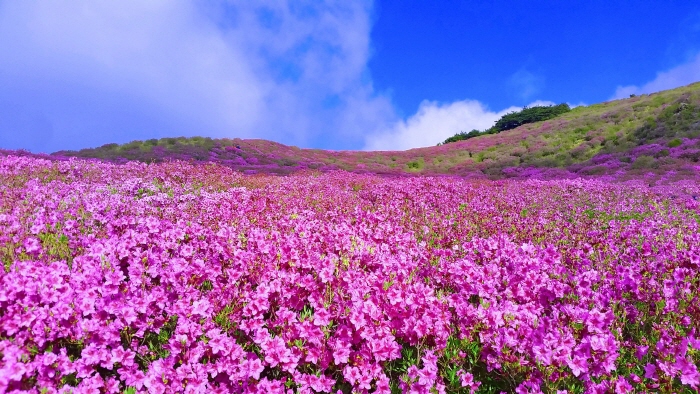
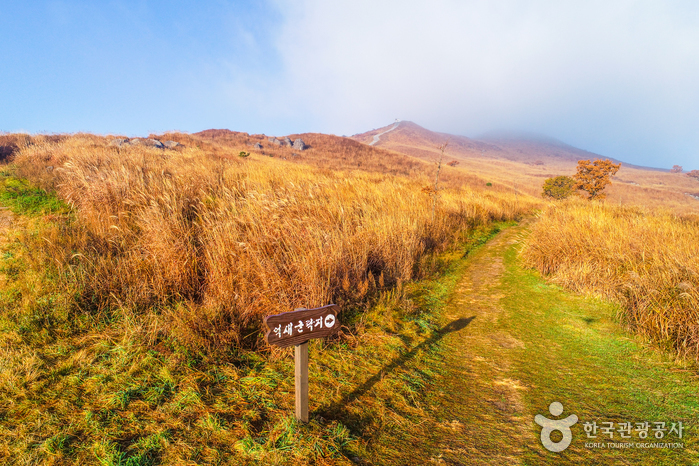
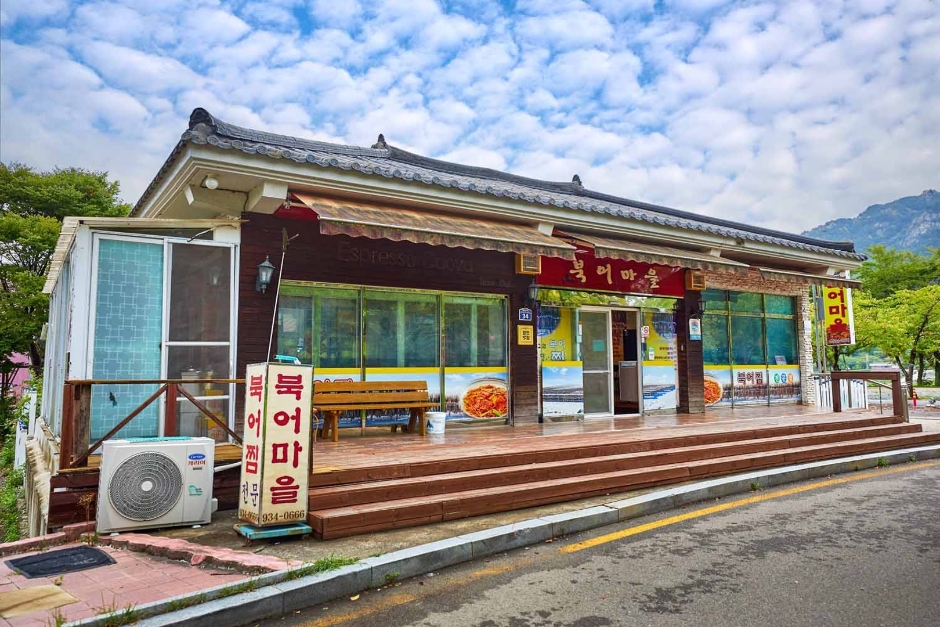
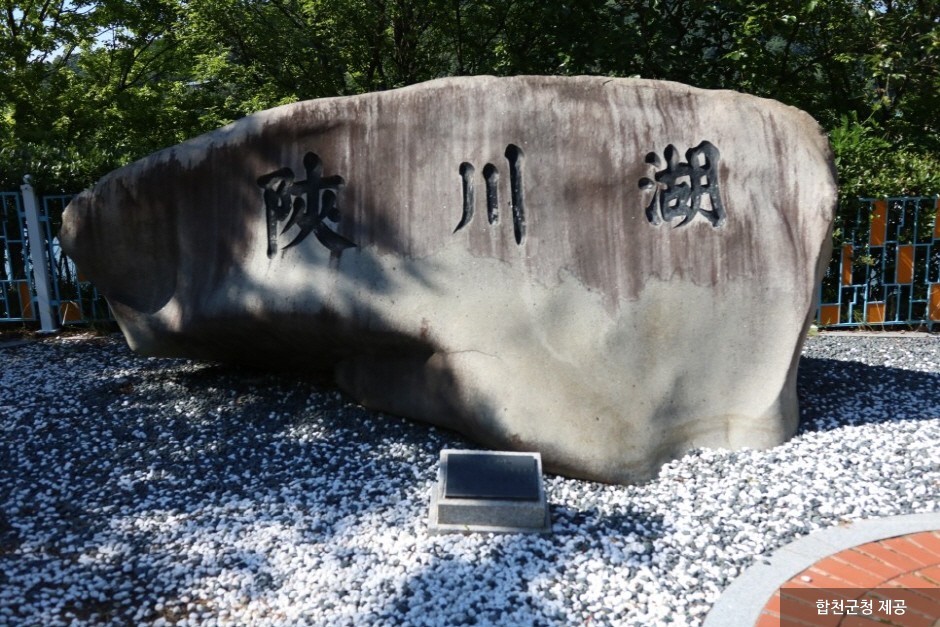
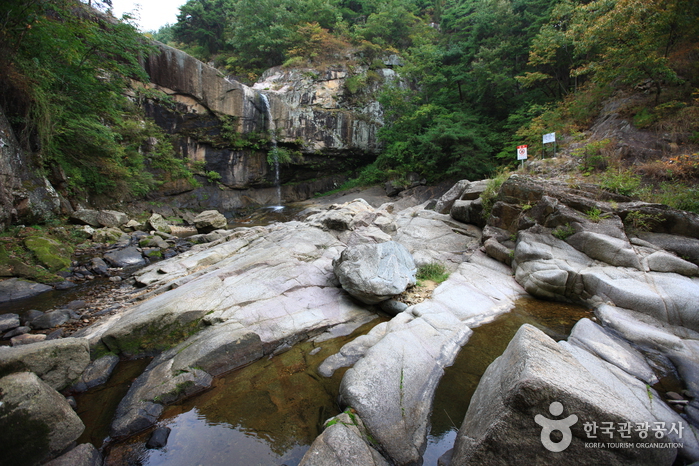
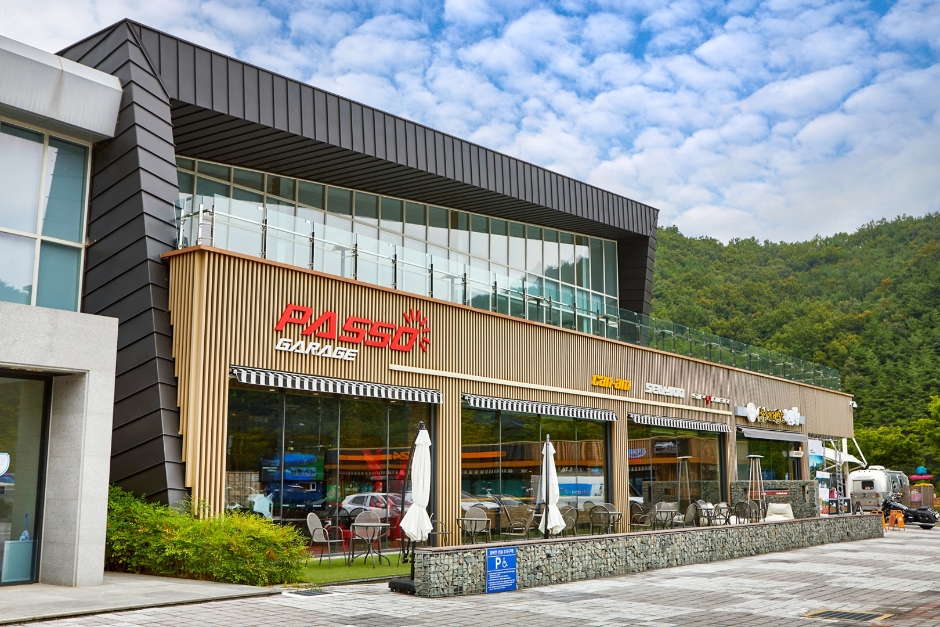

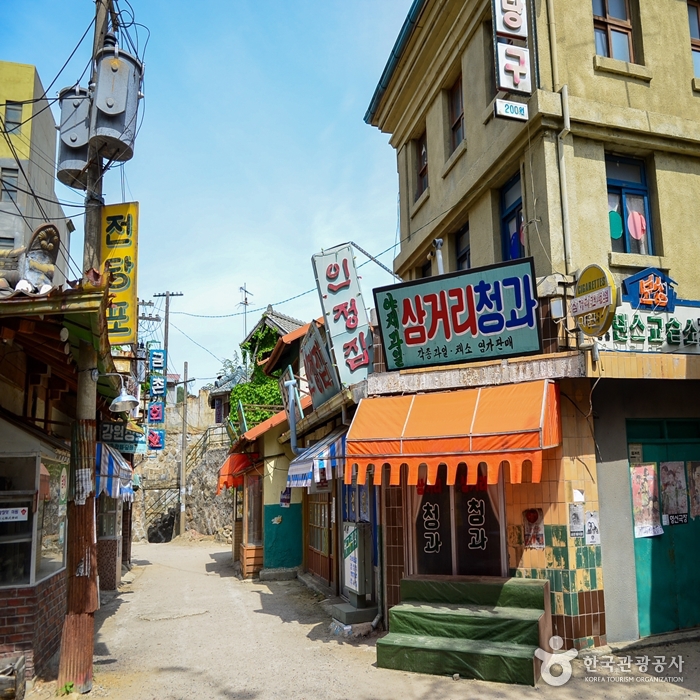
![Sancheongyulsuwon [Korea Quality] / 산청율수원 [한국관광 품질인증]](http://tong.visitkorea.or.kr/cms/resource/07/2631407_image2_1.jpg)
 English
English
 한국어
한국어 日本語
日本語 中文(简体)
中文(简体) Deutsch
Deutsch Français
Français Español
Español Русский
Русский